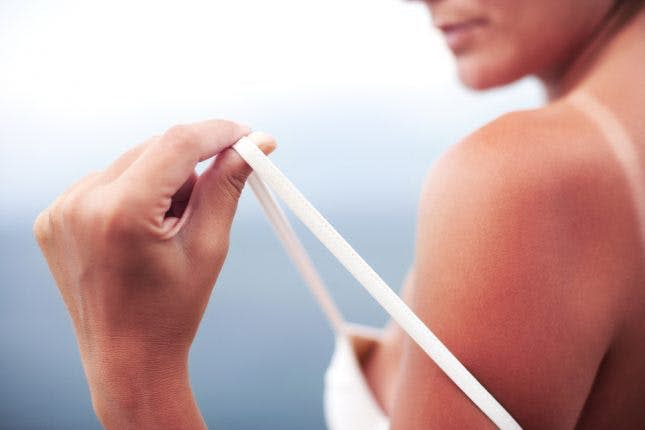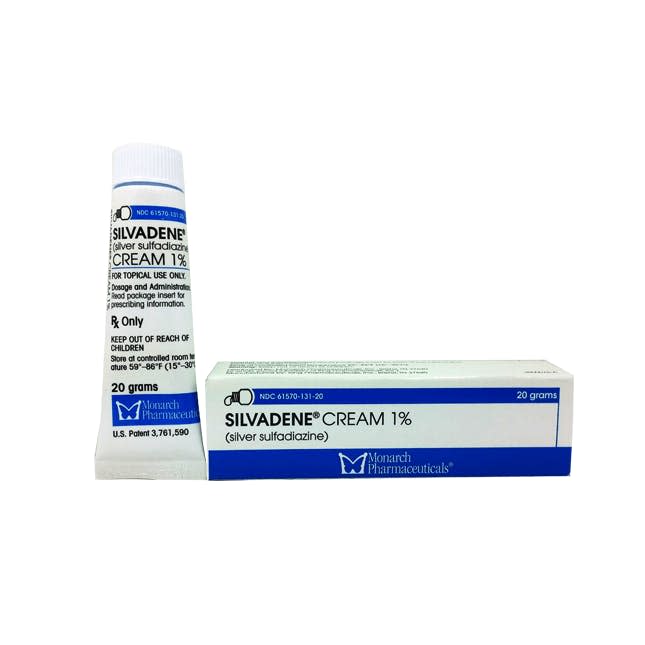How to Really Prevent, Soothe, and Treat Sun Burns
Prevention and treatment are everything when it comes to UV damage. Exposure to the sun can cause everything from hyperpigmentation and wrinkles to actual skin cancer. Because of this, it is especially important to tend to sore, red post-sun struggles with the most effective products and practices. We tapped top dermatologists for the best ways to prevent, soothe, and treat sunburns.
Burn 101

Brit + Co: What happens when UV exposure results in a sunburn?
Lily Talakoub of Mclean Dermatology & Skincare Center: UV radiation penetrates multiple layers of the skin, causing DNA damage. This results in brown spots, skin cancer, and also the breakdown of collagen, which brings on wrinkles, and elastin, which causes loose and sagging skin. A sunburn is just an exaggerated burn of the skin from too much UV radiation.
B+C: Is the effect of photodamage irreversible?
Michelle Hure of OC Skin Lab: After damage occurs, some cells are able to repair the DNA, but other cells die or become mutated. Repeated burning or even just chronic sun exposure will lead to long-lasting damage [such as] skin cancer, pre-cancerous lesions, immune system suppression, and premature aging. These changes are hard to reverse, and we end up continually chasing the effects of the damage years down the road. (Photo via BH Skin)
Prevention

B+C: What SPF grade or ingredients should we look for in a sunscreen?
LT: I recommend a sunscreen with SPF 50 or more with UVA and UVB coverage. I always wear a physical sunscreen with zinc oxide or titanium dioxide because they protect my skin against [both]. The chemical sunscreens with ingredients like oxybenzone don’t protect against the entire UV spectrum. Brit + Co Pick: All Good Sport Sunscreen Butter Stick Water Resistant SPF 50 ($14)
B+C: Do you prefer mineral (that use physical blockers like zinc oxide to reflect the sun off the skin) or chemical sunscreens (that are more traditional and absorb and transform harmful UV rays)?
LT: Physical blockers tend to stay on much longer; however, all sunscreens should be reapplied every two hours for maximum coverage, particularly if you are sweating or exposed to water. No sunscreen is waterproof; some are water-resistant, but the maximum time is 80 minutes.
treatment

B+C: What should we should do if we get a sunburn?
MH: Stay out of the sun and wear sun-protective clothing. I know, duh, but for the next couple of weeks your skin is in healing mode. Even the slightest bit of exposure will continue the damaging process to your skin and the DNA in your cells. Immediately take 100,000 IU of oral vitamin D. It reduces redness and inflammation and induces skin barrier repair. Brit + Co Pick: Ortho Molecular Vitamin D3 50,000 IU ($25)
B+C: How can I treat my sunburn?
MH: Throughout the day, cool your skin with cool/wet towels for 10-15 minutes, and take ibuprofen to help reduce swelling and lower fevers that may accompany deeper or more widespread sunburns. Apply aloe vera to the burn throughout the day. (Tip: Keep the aloe in the fridge!) Over-the-counter hydrocortisone cream may also help reduce inflammation and symptoms. Be sure to avoid Vaseline or any other petrolatum products that tend to keep heat in.
healing

B+C: Is there anything we can do to heal a sunburn quicker?
LT: I recommend a medication called Silvadene, which is antibacterial and helps heal the skin. However, there are great over-the-counter products as well, like Coola ER+ Radical Recovery After-Sun Lotion ($32), iS Clinical Sheald Recovery Balm ($72), Soleil Toujours After Sun Rescue + Repair Brightening Serum ($95), Avene After-Sun Repair Creamy Gel ($18).
B+C: What about peeling — how can we minimize it?
LT: Moisturize a LOT. Hydrating sheet masks are also great. I particularly like the ones from Peter Thomas Roth.
What products will you use to fend off sunburn this summer? Tell us on Pinterest!
Brit + Co may at times use affiliate links to promote products sold by others, but always offers genuine editorial recommendations.


